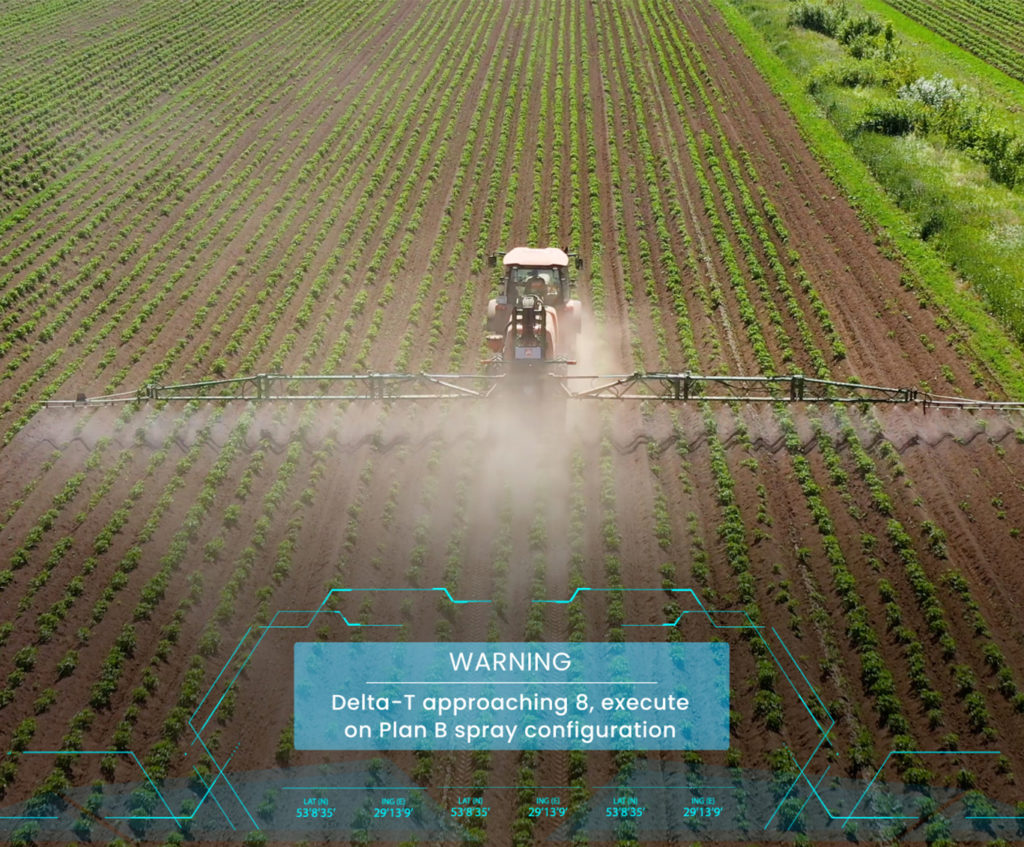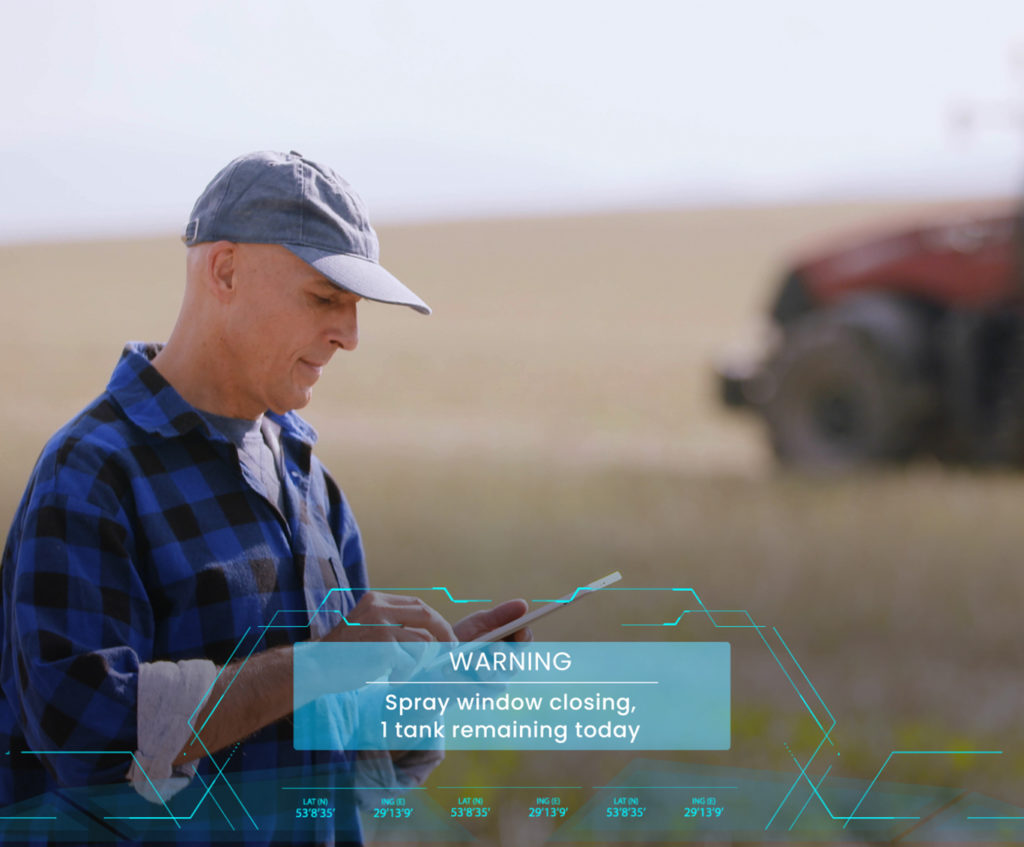LX wins prestigious BRII Grant program with Revolutionary Spray Advisory System
Maverick Spray Advisory for Tackling Agricultural Spray Drift is a winner for 2021 Grant Application
Introduction to the BRII challenge – Looking for an Agricultural Spray Advisory Solution
Back in September 2020, LX Design House submitted an initial proposal for the BRII Challenge (Business Research and Innovation Initiative) administered by the CRDC (Cotton Research and Development Corporation), posed to seek technology solutions to revolutionise Agricultural Spraying processes and reduce the issue of Spray Drift.
Spray Drift can occur where a pesticide or other chemical is sprayed from a machine when conditions are less than favourable. There are a number of parameters that can affect this, from the wind speed and direction, to the type of nozzle used on the spray rig, to the height of the ‘boom’ arms that extend out to disseminate the chemical.
With so many variables, both fixed and fluid, that can change across the course of a spraying process, it can be incredibly challenging to get this process perfect. Imperfect spraying can lead to volatilisation of the chemical and subsequent drift of these chemicals in weather systems that can carry it far off course. These systems can then deposit it into other more sensitive crops areas, particularly those like cotton, as well as local waterways and ecosystems and onto suburban and rural communities.
These environmental impacts, combined with the risk of litigation for the farmer, the loss of efficacy and the resulting increased costs for chemicals, mean there are myriad drivers to wanting a solution for this issue. However current attempts to tackle the issue of Spray drift have often centred on education which can be contradictory or overwhelming for the end user. Any tools available to help farmers plan more effectively may deal with improving efficacy or reducing drift, but not both.
Similarly the data sources available to farmers to help assess variables for spray windows are disparate, complex and are only available for pre-planning purposes. So if conditions change in a variable mid spraying that cannot be tracked easily by visual observation, the likelihood is that the operator will continue spraying in unfavourable conditions.
The LX Product Design Process
The above observations were gleaned from an in depth research and discovery process, similar to the client discovery processes and workshops we run with any of our Design House clients.
Taking experience and knowledge gained from full stack development across multiple industries, including AgTech Product Development, we knew that understanding the end user in this instance would determine how successful any end product would be. To tackle the issue of Agricultural Spray drift, we knew from interviews and discovery sessions that any proposed solution would need to have the following characteristics:
- Aim to not only tackle the issue of spray drift but also try to improve efficacy and accuracy for the operator to help drive operational efficiencies/savings.
- Be easy to install, deploy and use. Farmers are comfortable using complex equipment and systems in modern day farming, but any solution that sought to encourage uptake shouldn’t take more time or effort than the processes it claims to improve on.
- Be machinery agnostic or allow for differing entry levels. We knew that a solution needed to be accessible to differing income levels and access to resources. If a product or solution was cost prohibitive we do it would not achieve adoption at the scale required to have a significant impact on the industry and the issue of Spray Drift.
- Be managed as a full stack design project. This was an internal direction, based on the requirement to give the end user a remarkable experience that achieved the 3 prior goals. Whilst the product design process would ultimately end up drawing on third party data sources and some existing products, we wanted to ensure that everything from the electronic hardware through to the apps and reporting dashboards followed the same LX Design Principles and was power efficient, long lasting and easy to use.
By combining these key goals and drawing on our team’s expertise in system architecture and low power IoT and Electronic product development, we created our proposed solution.
Maverick by LX: Spray Drift Advisory System (BRII 2021 Solution) from LX Marketing on Vimeo.
Introducing Maverick: An Agricultural Spray Advisory System
Our proposed solution takes a specific configuration of our IoT static sensing and tracking products as well as specially designed software to create a system that helps operators with the entirety of the spray application process. From planning for the most effective spray windows, to mid process alerts and updates on key variables, to post spray analysis and learning materials, we want to give farmers the ability to increase effectiveness over time and receive real-time alerts that help them data informed decisions as they’re spraying.
Maverick provides a tiered entry system for farmers, so regardless of their investment capability, they are able to access the system and start seeing tangible results. At its most advanced level, Maverick is able to open up spray windows to operators that would not previously have been available, so the most sophisticated operators have access to higher level risk calculations underpinned by more data points and real time alerts.
The name Maverick is fitting, as we’re wanting to give operators the ability to push the envelope and have more choice around spraying rather than less, but we’re ensuring those choices are backed by a wealth of data. And whilst we cannot disclose too much about how the solution works at this stage, we’re looking forward to launching Maverick in the near future and sharing more with you when we can!
The Process & Next Steps From Here
From over 20 different Australian companies that initially applied to the BRII & CRDC Revolutionising Spray Drift Challenge, LX was successful in being selected as one of the final six.
The next stages were a video presentation, feasibility study and Proof of Concept application. We are incredibly proud of the hard work and effort the LX team of engineers, software developers, sales and marketing professionals and support staff put into this process. Over 4 months, we developed a system we truly believe has the ability to affect large scale change in this industry.
We are beyond honoured to have had the opportunity to go through this process and to be selected as winners of the BRII Grant 2021 is amazing! Congrats to the LX Team!
The next steps from here are delivering on the proof of concept prototype and final product for our agricultural spray advisory system, and executing our commercialisation plan. Whilst we can’t give too much away about the solution itself right now, we’ll be providing updates as we go, so please sign up to our Newsletter at the form below if you’d like to be kept in the loop!



